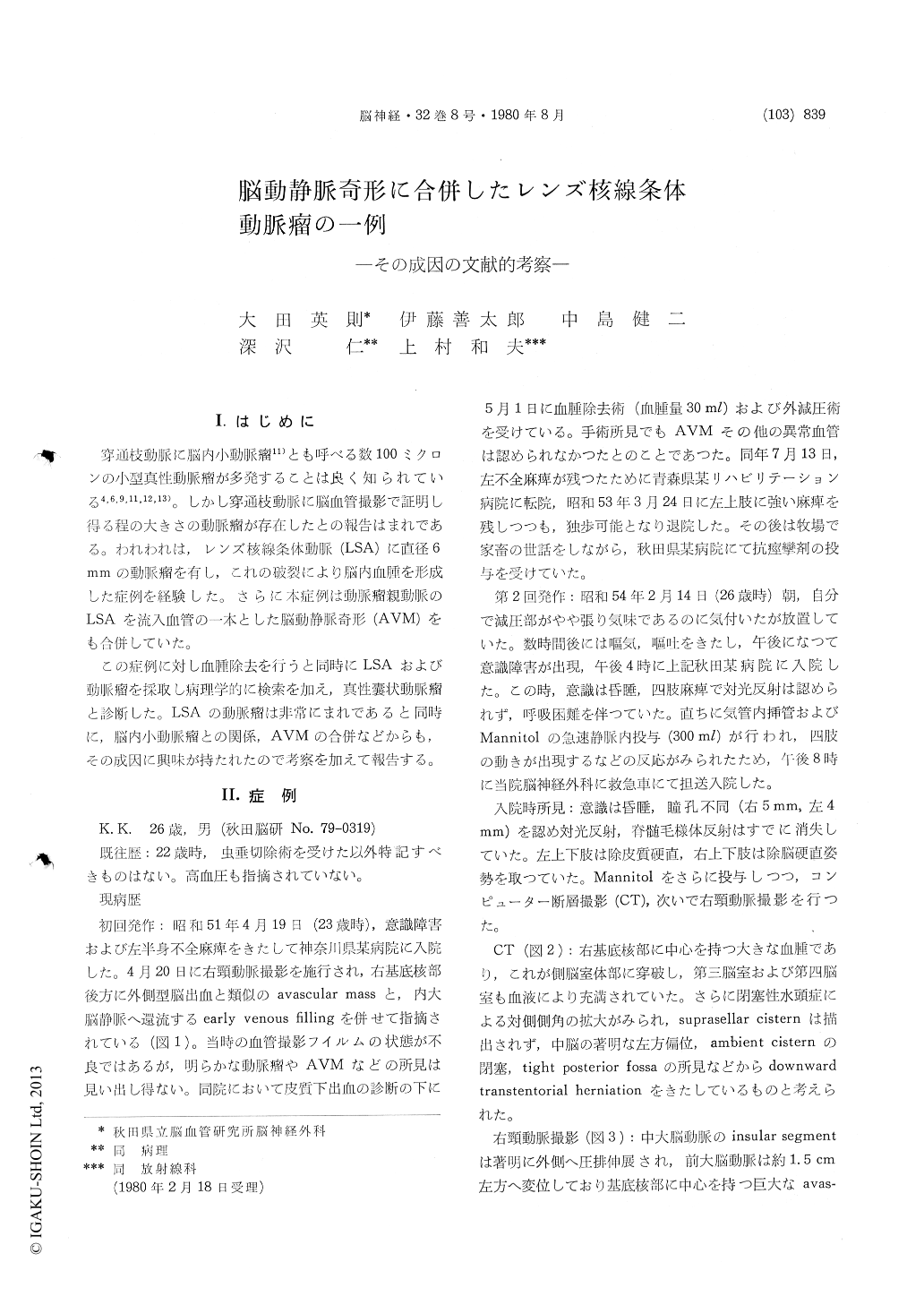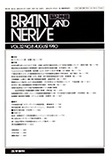Japanese
English
- 有料閲覧
- Abstract 文献概要
- 1ページ目 Look Inside
I.はじめに
穿通枝動脈に脳内小動脈瘤11)とも呼べる数100ミクロンの小型真性動脈瘤が多発することは良く知られている4,6,9,11,12,13)。しかし穿通枝動脈に脳血管撮影で証明し得る程の大きさの動脈瘤が存在したとの報告はまれである。われわれは,レンズ核線条体動脈(LSA)に直径6mmの動脈瘤を有し,これの破裂により脳内血腫を形成した症例を経験した。さらに本症例は動脈瘤親動脈のLSAを流入血管の一本とした脳動静脈奇形(AVM)をも合併していた。
この症例に対し血腫除去を行うと同時にLSAおよび動脈瘤を採取し病理学的に検索を加え,真性嚢状動脈瘤と診断した。LSAの動脈瘤は非常にまれであると同時に,脳内小動脈瘤との関係,AVMの合併などからも,その成因に興味が持たれたので考察を加えて報告する。
It is well known that the perforating arteries harbor the microaneurysms which cause the hyper-tensive intracerebral hemorrhage. But, aneurysms of these perforating arteries are rarely visualized by the routine cerebral angiography. We experi-enced the ruptured aneurysm (φ6 mm) of enlarged lenticulostriate artery (LSA, φ1 mm) which was one of the feeders of accompaning arteriovenous malformation (AVM). This aneurysm is not only rare in its incidence but also interesting in the mechanism of growth.
A normotensive 26-year-old man was admitted to our hospital in comatose state. He had the history of surgical evacuation of intracerebral hematoma (about 30 ml) three years before under the diagnosis of spontaneous subcortical hematoma situated at the posterior part of basal ganglia on the right side. Angiographycally, there had been no evidence of aneurysm or AVM, but the early venous filling which drained via medullary vein to internal cerebral vein had been clearly visualized.
Neuroradiological examinations after the admis-sion to our hospital were as follows. CT scan showed the massive intracerebral hematoma at the right basal ganglionic region with ventricular rup-ture. Right carotid angiography revealed a newly developed aneurysm of LSA with extravasation and AVM at the right posterior part of operculum. Draining vein, only faintly visualized, was the enlarged medullary vein.
Immediately after the examinations, emergency evacuation of hematoma (120 ml) was done, aneu-rysm and its parent artery (LSA) were resected for the histological examination. Microscopic examina-tion confirmed this as a true saccular aneurysm of LSA. Compared with preperative angiogram, the draining vein are visualized more clearly by the postoperative follow-up angiogram.
There have been many reports concerning the pathogenesis of saccular aneurysms which are sum-med up as congenital, acquired and combined theory. In recent years, many researchers commonly sup-port the combined theory, which the congenital medial defects of vessel-walls plus acquired factors such as the hemodynamic stress will cause the saccular aneurysms.
We concluded that this rare LSA aneurysm had been developed by the hemodynamic stress derived from the accompaning AVM in addition to the congenital abnormalities of vessel-walls such as the medial defect.

Copyright © 1980, Igaku-Shoin Ltd. All rights reserved.


